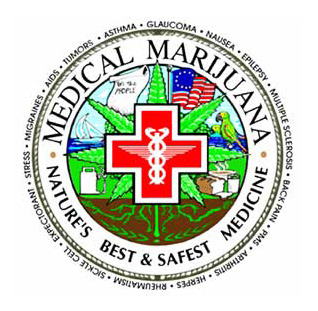
*President Obama approves of the use of medical marijuana for seriously ill patients (source).
*Former Governor Doyle also approves of the use of medical marijuana for seriously ill patients (source).
*The Center For Medicinal Cannabis Research in California released a report on Feb. 17, 2010 proving once and for all that inhaled marijuana is medically safe and effective in treating various illnesses. (source)
*Marijuana has been shown to lower blood cholesterol and dissolve plaque in coronary arteries.
*From 1842-1890 a cannabis extract was the second most prescribed drug in the US.
*Cannabis is a non-opiate, non-addictive pain killer
*Cannabis stimulates the appetite for people with AIDS and cancer.
*In 2006, Donald Tashkin, M.D., of the University of California in Los Angeles, presented the results of his study, Marijuana Use and Lung Cancer: Results of a Case-Control Study. Tashkin found that smoking marijuana does not appear to increase the risk of lung cancer or head-and-neck malignancies, even among heavy users.
*Hempseed can be fed to horses to induce estrus.
*THC has been found to reduce tumor growth in common lung cancer by 50 percent and to significantly reduce the ability of the cancer to spread, say researchers at Harvard University.
*Clinical trials provide evidence that THC reduces motor and vocal tics of Tourette’s syndrome and related behavioral problems such as obsessive-compulsive disorders (http://www.doctordeluca.com/Library/WOD/WPS3-MedMj/CannabinoidsMedMetaAnalysis06.pdf)
*Marijuana promotes neuron growth.
*There are over 60 chemicals in marijuana which may have medical uses. It is relatively easy to extract these into food or beverage, or into some sort of lotion, using butter, fat, oil, or alcohol.
* In 1988, the DEA’s Administrative Law Judge, Francis Young concluded: “In strict medical terms marijuana is far safer than many foods we commonly consume. For example, eating 10 raw potatoes can result in a toxic response. By comparison, it is physically impossible to eat enough marijuana to induce death. Marijuana in its natural form is one of the safest therapeutically active substances known to man. By any measure of rational analysis marijuana can be safely used within the supervised routine of medical care.:
*There is no convincing scientific evidence that marijuana causes psychological damage or mental illness in either teenagers or adults. Some marijuana users experience psychological distress following marijuana ingestion, which may include feelings of panic, anxiety, and paranoia. Such experiences can be frightening, but the effects are temporary. With very large doses, marijuana can cause temporary toxic psychosis. This occurs rarely, and almost always when marijuana is eaten rather than smoked. Marijuana does not cause profound changes in people’s behavior.
*In 1972, after reviewing the scientific evidence, the National Commission on Marihuana and Drug Abuse concluded that while marijuana was not entirely safe, its dangers had been grossly overstated. Since then, researchers have conducted thousands of studies of humans, animals, and cell cultures. None reveal any findings dramatically different from those described by the National Commission in 1972. In 1995, based on thirty years of scientific research editors of the British medical journal Lancet concluded that “the smoking of cannabis, even long term, is not harmful to health.”
*For twenty-five years, researchers have searched for a marijuana-induced amotivational syndrome and have failed to find it. People who are intoxicated constantly, regardless of the drug, are unlikely to be productive members of society. There is nothing about marijuana specifically that causes people to lose their drive and ambition. In laboratory studies, subjects given high doses of marijuana for several days or even several weeks exhibit no decrease in work motivation or productivity. Among working adults, marijuana users tend to earn higher wages than non-users. College students who use marijuana have the same grades as nonusers. Among high school students, heavy use is associated with school failure, but school failure usually comes first.






